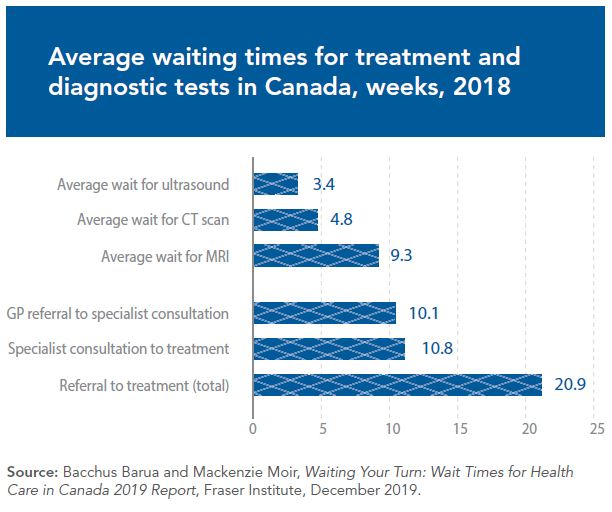Despite decades of animated public debates and the colossal sums spent – which keep on increasing – waiting times for Canadian patients continue to worsen, notes a study published today by the Montreal Economic Institute.
“The situation has worsened over the years,” says Peter St. Onge, Senior Economist at the MEI and author of the publication. “In 1994, the average gap between clinically reasonable delay and actual delay was only four days, but by 2019 it had grown to 25 days.”
An average of 20.9 weeks pass between referral for a consultation and actual treatment, in addition to the original wait to see the family doctor (for those Canadians who have one!). In all, over one million Canadians – 3% of the entire population – are waiting for a medical treatment, sometimes for months on end.

To take one example, a 16-year-old boy in British Columbia waited three years for an “urgent” surgery, during which time his condition deteriorated and he became a paraplegic. In another case, a Montreal man was called for a surgery for a severe heart problem three months after he had died.
“These tragedies are not just anecdotes. And they risk becoming more frequent with the growth of medical wait times,” says Patrick Déry, Senior Associate Analyst at the MEI. A survey of specialists found that average waiting times exceed what is clinically “reasonable” in 77% of cases.
In addition to rationing care using waiting lists, Canada underinvests in equipment and staff. For example, Canada has fewer MRIs per capita than the United States, and fewer even than Turkey, Chile, or Latvia.
“Canadians are the most patient patients in the world! To the months of delays for a consultation must be added months of diagnostic delays, and then more months for treatment,” says Mr. Déry.
Why do we wait longer than elsewhere? There are numerous universal systems across the world, from Europe to Japan, which work relatively well and avoid Canada’s epic wait-times and its shortages of equipment and staff.
“The main difference is that these countries let the private sector lend a hand. And the results are conclusive. The data show that it is possible to eliminate waiting lists all while preserving universal coverage,” adds Mr. St. Onge.
“The inefficiency of the public monopoly in delivering timely care has been demonstrated for a long time. The solutions are known, and Canadians are ready for entrepreneurs to pitch in as long as public funding is maintained, something that already happens in the rest of the industrialized world. It’s now up to our politicians to act. Continuing to allow patients to pay the price for a dysfunctional system is simply cruel,” conclude the researchers.










Comments
NOTE: The North Shore Daily Post welcomes your opinions and comments. We do not allow personal attacks, offensive language or unsubstantiated allegations. We reserve the right to edit comments for length, style, legality and taste and reproduce them in print, electronic or otherwise. For further information, please contact the editor or publisher, or see our Terms and Conditions.